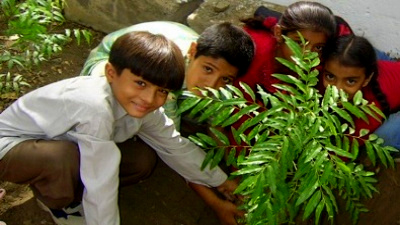Tomorrow’s leaders have to be educated and prepared for tomorrow’s issues, and our children must be prepared for the future they will inherit. Environmental education is the key to a brighter future as climate change is worldwide, and its long-term disastrous repercussions have never been so scientifically obvious.
Experts think that society’s capacity to perpetuate itself is dependent on how it educates the next generation. Environmental education from early childhood is essential to guarantee that all children have access to a high-quality, inclusive, and equitable education that fosters lifetime learning possibilities. This will educate our children about their responsibility towards the environment and help us align more towards Sustainable Development Goals (SDGs) started by the UN 2016-2030.
Ways in which we can introduce sustainable living factors for kids
Awareness – educate – lead
- Today’s youngsters will become tomorrow’s governors and international leaders. They will face enormous difficulties, such as global warming and water scarcity, and make critical decisions that will affect humanity. They hold the key to the future! If they know “why”, they will figure out “how’. That’s why creating awareness is essential.
- Practical education and its implementation will help young minds to understand better. Example- In the classroom, set up a recycling system and teach the kids how to utilise it and recycle their belongings.
- Set an example because kids learn from their elders. Teaching students what it means to be environmentally conscious is crucial, but instructors who can lead by example will have a more significant impact.
Introducing 3Rs
The three ‘R’s’ are namely Reduce-Reuse-Recycle. Making our children aware of the necessity and benefits of 3Rs might be a beneficial step toward environmental preservation. Kids must learn through practical application rather than theory notes. Empowering and making a habit will help them to learn and adapt. The steps can be introduced in ways such as: making efficient use of paper by printing on both sides, requesting children to research ways to recycle cardboard boxes, old newspapers, and tins and turn them into valuable items or instruct your child only to serve himself/herself the amount of food he needs.
Engaging children at different levels
It is essential to engage at different levels to introduce environmental sustainability, starting from home to classroom to school and community. Students should first assess the amount to which they use natural resources at school. Thus they will be able to evaluate their environmental management activities as a result of this.
Secondly, forming and running Eco Clubs allows children to participate in environmental initiatives and activities, thereby empowering them and educating others. Teachers should make sure that they use creative ways to introduce topics and train students, e.g. environmental-friendly games, which will help them understand better and introduce kids to environmental causes and challenges and possible remedies through field trips.
Benefits of early environmental education
- The plugged-in lifestyle of today’s generation, which is the first to grow indoors, may be countered by environmental education. Children with access to school grounds or play spaces with natural surroundings are more physically active, nutritionally aware, creative, and courteous to one another.
- Environmental education promotes abilities such as inquiring, exploring, identifying issues, analysing, interpreting, reasoning, generating conclusions, and solving problems necessary for success in tomorrow’s world.
- Cooperative learning with others, critical thinking and conversation, and an emphasis on action plans with real-world applications are emphasised in environmental education.
- This builds the capacity of students to centre and improves their intellectual capabilities. Kids with a lack of ability to concentrate consistently jumble additional advantages from more openness to nature–the greener a youngster’s regular climate, the more sensible are their manifestations.
- Environmental Education empowers teachers to take their students outside and create more dynamic, interactive learning experiences that captivate kids.
Rohan Parikh aims to provide affordable, holistic and a well-rounded education by adapting the latest research in teaching and learning techniques.











